Guanyin returns to Boston Museum
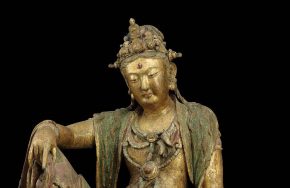
A Buddhist deity sculpture, absent from the galleries at the Museum of Fine Arts, Boston, for 17 years, will go back on view there next month after undergoing analyses and treatments throughout its gilded surface.
This deity, Guanyin, which embodies compassion, was carved about 900 years ago from a tree trunk. Nearly six feet tall, the figure is seated in a casual pose, with its glass eyes facing downward and one leg dangling as though being dipped in a pool of water. The underlying legend is that the deity was gazing at a reflection of the moon in the water.
Abigail Hykin, a conservator at the museum, has stabilized its flaking paint and has supervised tests that revealed insects, nails, dowels, pins and patches embedded in the body and limbs. (Further testing is being done to determine the types of insects.) The sculpture will be displayed starting on Feb. 6. Only a handful of similar wooden Guanyins survive, including ones at the Nelson-Atkins Museum of Art in Kansas City, Mo.; the Rijksmuseum in Amsterdam; and the Victoria and Albert Museum in London.
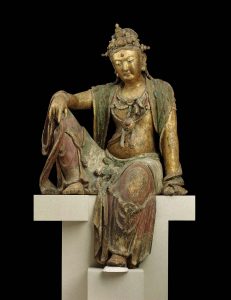
Museum of Fine Arts, Boston
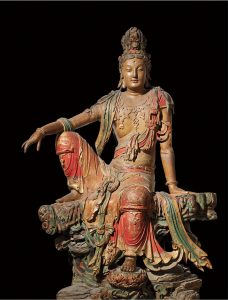
Nelson-Atkins Museum
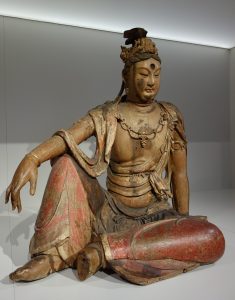
Rijksmuseum
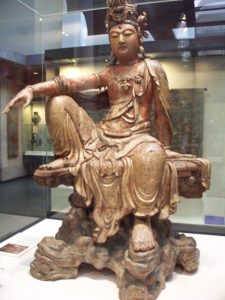
Victoria and Albert Museum
The Boston museum’s figure is from northern China, but there is no information about which temple it belonged to before it arrived at the institution in 1920. It was originally sold to the museum with two smaller deity statues that will be analyzed to see whether their wood type and gilded paint match the Guanyin.
Barely decipherable inscriptions on the surface suggest dates when worshipers paid to have the wood repainted. Nancy Berliner, the museum’s curator of Chinese art, said that patrons would have hoped to gain “good karma from redecorating a Guanyin.”
The figure wears a crown and is draped in tassels and beaded jewelry, and its pierced ears indicate that at one time it also wore earrings. A plastic jewel in its forehead, which was added in the 1950s, has been removed. This Guanyin radiates calm rather than vanity.
“The expression on the face is so compassionate,” Ms. Berliner said.
The Museum of Fine Arts will display the deity alongside the X-rays and other scans of its surface and interior that were taken during the analysis.
Back